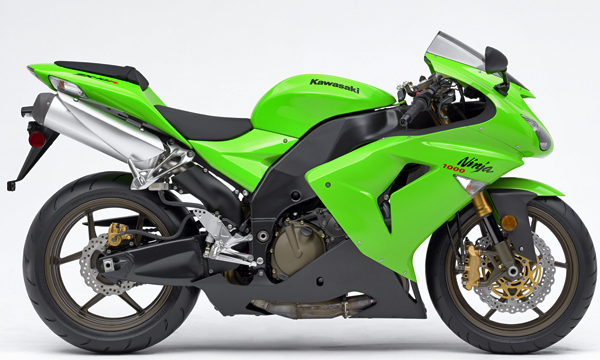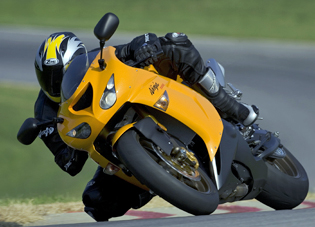
Kawasaki has announced that the two-year-old ZX-10R has been substantially redesigned for the 2006 model year. The engine, chassis and bodywork are significantly changed.
Beginning with the engine, Kawasaki claims that several changes, including a new fuel injection system coupled with increased flywheel mass greatly benefits corner exit acceleration and makes the power, although increased, more linear and controllable.

Together with increased power, Kawasaki has reduced the weight of the 2006 ZX-10R and made it more aerodynamic.
Kawasaki says handling of the new 2006 ZX-10R is improved due to a number of changes. The engine has been repositioned to change the center of gravity and improve the roll response (i.e., ability to change direction). The frame’s stiffness balance was improved by using rigid engine mounts and new castings in the steering head. A new swingarm pivots from a new location and helps increase traction exiting corners in conjunction with the new, larger rear tire (190 section). The ZX-10R comes stock with a high quality, adjustable Ohlins steering damper.
Several detail refinements result in reduced weight and improved aerodynamics. Indeed, it is pretty clear that Kawasaki was very focused on superbike racing when it designed the new 10R.

Some of the improvements include the very light and compact projector beam headlights, a reshaped rear seat cowl that reduces wind turbulence, the underseat exhaust system, and the integration of the turn signals into the fairing.
Kawasaki has also redesigned the often-criticized instrumentation, including the tachometer, of the previous machine, for much greater legibility.
All in all, the 2006 ZX-10R represents a dramatic change to a two-year-old design.






